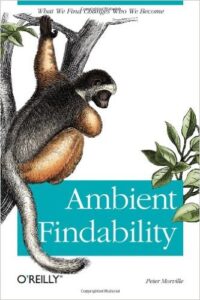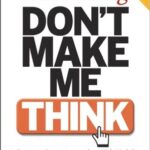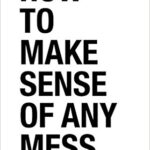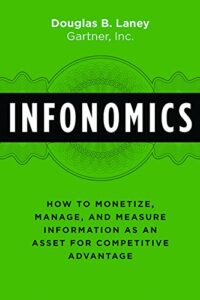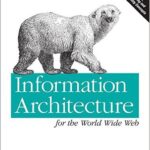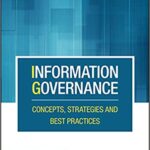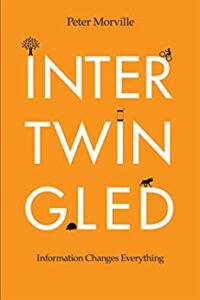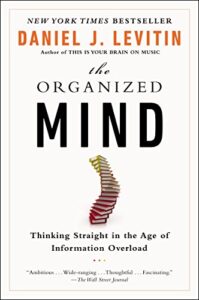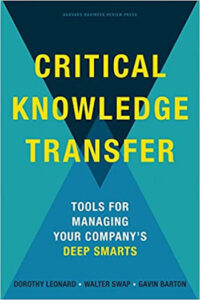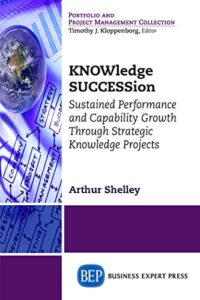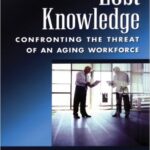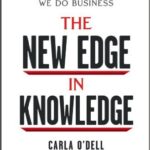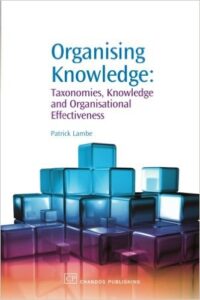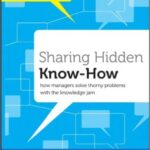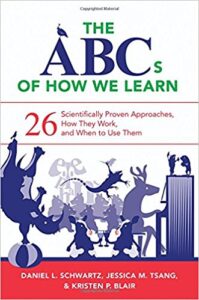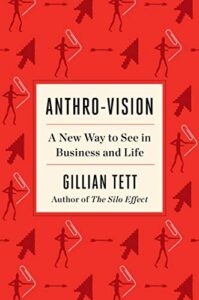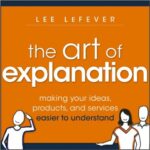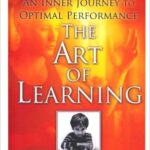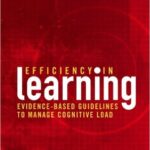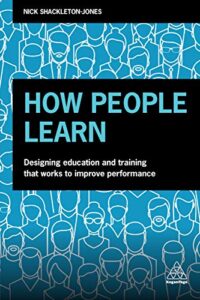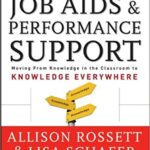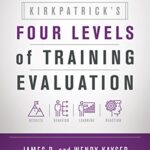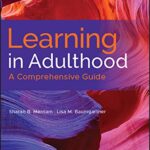Content, Knowledge, and Learning

Subcategories
Or browse all Content, Knowledge, and Learning books
The Accidental Taxonomist
There are dozens of things that I do each day that I didn’t set out to do. I do accounting and billing work without a desire or intent to do it. I do sales and marketing – and neither are at the top of my list of things to do. I accidentally picked the...
The Age of Overwhelm: Strategies for the Long Haul
Few, I think, would argue against the idea that we’re in the age of overwhelm. The amount of information that we encounter daily is overwhelming. The rate of change is overwhelming. That’s what makes The Age of Overwhelm: Strategies for the Long H...
Ambient Findability
There have been times when I saw down with a topic and I just couldn’t get the words and the ideas to align. There were other times when the idea was so powerful that the words seemed insufficient. This is the case with Ambient Findability . Peter Mo...
Don’t Make Me Think
As someone who gets engaged by clients to help them work through their problems, you wouldn’t expect I’d like a book titled Don’t Make Me Think , but it’s perhaps the most accessible book on web usability that I’ve run into. In fact, I’d recommend it...
The Elements of User Experience
Where does Information Architecture begin and end? It’s a question that I’ve been struggling with. There are so many impacts into user experience, visual design, navigation, etc. I tend to think of Information Architecture as the overall framework or ...
How Buildings Learn: What Happens After They’re Built
I’m not an architect, but as an information architect, I’m curious about how classical architects approach the problems of buildings that people love. This journey led me to Stewart Brand’s book, How Buildings Learn: What Happens After They’re Built ....
How to Make Sense of Any Mess
When I explain my passion for information architecture to folks, they often wonder what I’m talking about. They understand intuitively that I’m not talking about designing buildings, but how can you design information? A better way of explaining information arc...
Infonomics: How to Monetize, Manage, and Measure Information as an Asset for Competitive Advantage
Most of the time, we pay no attention to the wind that’s blowing past us. Whether it’s a cool breeze or a warm draft of air rising from the pavement, we’re so used to air movement around us that we rarely consider its implications until we encounter a tor...
Information Architecture: Blueprints for the Web
There’s one statement that is definite truth, there’s no mystery in how Information Architecture: Blueprints for the Web approaches IA. It’s all about the web – and why shouldn’t be. If we’re accessing information today we’re likely doing it via th...
Information Architecture for the World Wide Web: Designing Large-Scale Web Sites
Sometimes the obvious isn’t obvious. The “Polar Bear” book is a classic work for Information Architecture. Information Architecture for the World Wide Web: Designing Large-Scale Web Sites by Peter Morville and Louis Rosenfeld was written in 2006 b...
The Information Diet: A Case for Conscious Consumption
Most of the time when I read a book that I have problems with – or that I don’t like most of it – I simply don’t write a review of it. I generally think that there’s little value in telling people what not to buy – it’s a habit I picked up from my da...
Information Governance: Concepts, Strategies and Best Practices
Unlike most of my reviews, I should start with a small disclaimer. Robert Smallwood, the primary author, reached out to me over a year ago and asked if I’d consider helping him with some SharePoint and Office 365 content in his Information Governance: Co...
Intertwingled: Information Changes Everything
It might seem odd that one of the forefathers of information architecture would proclaim that everything is intertwingled and thus hard to force down into specific categories, but that’s what Peter Morville is saying. You can’t separate the parts fro...
The Organized Mind: Thinking Straight in the Age of Information Overload – Facebook Friends
In the first part of the review of The Organized Mind: Thinking Straight in the Age of Information Overload , I addressed the direct impact of information overload (it’s here ). However, there were many lose ends in the book as it pertains to relationships and...
The Organized Mind: Thinking Straight in the Age of Information Overload – Information Overload
There’s a sort of irony in the fact that the first thing I have to say about the book The Organized Mind: Thinking Straight in the Age of Information Overload is that it seems unorganized. To be fair, I think that whenever you’re bringing together multi...
Pervasive Information Architecture: Designing Cross-Channel User Experiences
I view Information Architecture (IA) as the organization of information around you. I picked up Pervasive Information Architecture: Designing Cross-Channel User Experiences because I wanted to see how others thought about the problem of keeping messages c...
Critical Knowledge Transfer: Tools for Managing Your Company’s Deep Smarts
What is it that makes one person more valuable to an organization than another? Take two engineers with the same degrees from the same universities and even the same grade point average. One is invaluable to the organization, and the other is just a solid...
Digital Habitats: Stewarding Technology for Communities
I’ve been a part of or have led many groups in my time. Each one had a unique “feel.” Some were hyper focused, and others generally organized around a topic. Some were high technology and others decidedly not so. Developing communities has always been ...
Knowledge Management Matters: Words of Wisdom from Leading Practitioners
One of the many things that I enjoy about my life is the ability to walk from one world to another in a matter of moments. I’ve been a part of the knowledge management community for several years now. While far from all my time is spent in the community, I...
KNOWledge SUCCESSion
One of the most interesting things about Arthur Shelley, the author of KNOWledge SUCCESSion , is the mixture of academic and pragmatic practice. Having a foot in both worlds creates a rigor in research that isn't found in business books and a sense of...
Lost Knowledge: Confronting the Threat of an Aging Workforce
Knowledge management is tricky business. I’ve spent a non-trivial part of my professional career converting tacit knowledge into explicit knowledge – well, at least one kind of tacit knowledge. This is, in fact, part of the problem. Some of what we cal...
The New Edge in Knowledge: How Knowledge Management Is Changing the Way We Do Business
Knowledge management isn’t new. With more than two decades of history there have been knowledge management programs running with varying levels of success – and failure. The New Edge in Knowledge: How Knowledge Management Is Changing the Way We Do Busi...
Organising Knowledge: Taxonomies, Knowledge, and Organisational Effectiveness
When I write a book review most of the time, I write the review within a week or two after completing the book. I do that because it allows me to keep the topics the book presents fresh in my mind. However, it has the disadvantage of not having been f...
Organising Knowledge Revisited
The first time I reviewed Organising Knowledge was 2007. The book was new then. However, Organising Knowledge has become a book that seems to have a lot to say – even 11 years later. When I wrote my last review, I was just beginning with knowledge manag...
Seeing What Others Don’t: The Remarkable Ways We Gain Insights
It was October of 2011 when I reviewed Gary Klein’s book Sources of Power . Since I read and reviewed it, I’ve referred to it repeatedly. While preparing to see if Gary would respond to a question about knowledge management, I realized that last year...
Sharing Hidden Know-How: How Managers Solve Thorny Problems with the Knowledge Jam
I had the pleasure of working with Kate Pugh on a project for the Ark Group. During our discussions I found her speaking about her thinking about knowledge management and I realized that if I wanted to really understand what she thought about knowledge...
Sources of Power: How People Make Decisions
It may seem odd but my quest for resources for my upcoming Information Architecture DVD led me to a book on decisions. How's that? Well, Information Architecture is a funny thing. You’ll never know enough about the problem. You’ll always have to make com...
The ABCs of How We Learn: 26 Scientifically Proven Approaches, How They Work, and When to Use Them
I’m always trying to find ways to better teach and train. I, just like you, have seen plenty of bad training courses, where you want to stab pencils in your ears and gouge out your eyes just to stop the pain of listening and seeing the training session. W...
The Adult Learner: The Definitive Classic in Adult Education and Human Resource Development
It takes a lot of moxie to call yourself a definitive classic. However, the subtitle of The Adult Learner is probably correct. I picked up the book because of my work on the SharePoint Shepherd Presents DVD series . The goal of the series is to make le...
Anthro-Vision: A New Way to See in Business and Life
It sounds vaguely like a superpower. It’s “Anthro-Vision – the power to see things the way they really are.” However, that’s exactly what Gillian Tett is proposing for our everyday non-superheroes. Anthro-Vision: A New Way to See in Business and Life i...
The Art of Explanation
I spend quite a bit of my time in the professional world trying to explain things. Sometimes it’s to clients. Sometimes it’s developers. Sometimes it’s to the infrastructure team. Whomever it is, I know that sometimes my explanations work – and sometim...
The Art of Learning: A Journey in the Pursuit of Excellence
During my interview with Steven Kotler , the author of The Rise of Superman , he credited an idea to Josh Waitzkin. He was careful to share with me that Josh was a chess champion and the subject of the movie “Searching for Bobby Fisher” (which I’ve ...
Efficiency in Learning
I recently wrote an article for TrainingIndustry.com titled “Everything You Think You Know about Learning Retention Rates is Wrong ” which is perhaps a bit of a hyperbole but it’s based on the discovery that the traditional thinking about how people learn...
Extraordinary Minds
While reading Mindset , I stumbled across a reference to Howard Gardner’s book, Extraordinary Minds , that intrigued me. It said that “exceptional individuals have ‘a special talent for identifying their own strengths and weaknesses.'” On the basi...
How People Learn: Designing Education and Training that Works to Improve Performance
It wasn’t the first time I got into a discussion with someone who claimed to be an instructional designer. It wasn’t even the first time I encountered someone with a PhD in instructional design. It was also not the first time that I shuddered to th...
Job Aids and Performance Support
I’ve been a big fan of job aids for years. It’s my awareness that job aids are more impactful than training that led to the creation of the SharePoint Shepherd’s Guide . I’ve read many materials about how adults learn – like The Adult Learner and Effic...
Kirkpatrick’s Four Levels of Training Evaluation
Sometimes, you say a thing and it just catches on. It’s a moment of insight that gets frozen in time like a mosquito in amber, and later you realize just what you have. Kirkpatrick’s Four Levels of Training Evaluation is like this. It’s a simple framewo...
Learning in Adulthood: A Comprehensive Guide
For a long time, I’ve thought about the ability to learn as a master skill – the one that unlocks all the other possible skills. Learning in Adulthood: A Comprehensive Guide echoes that same sentiment. It acknowledges that, today, the world we li...
A Nation at Thought: Restoring Wisdom in America's Schools
Who is the keeper of conventional wisdom? Wouldn’t that be the educational establishment? What would happen if conventional wisdom was wrong? A Nation at Thought: Restoring Wisdom in America’s Schools is a reflection on what we’ve done to traditio...






